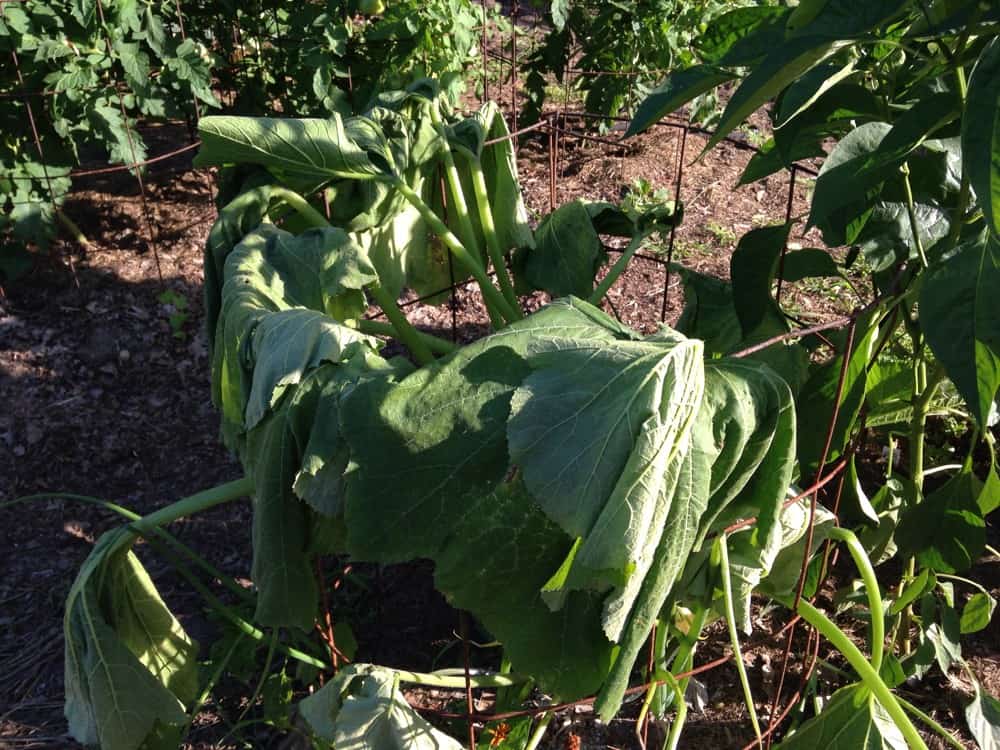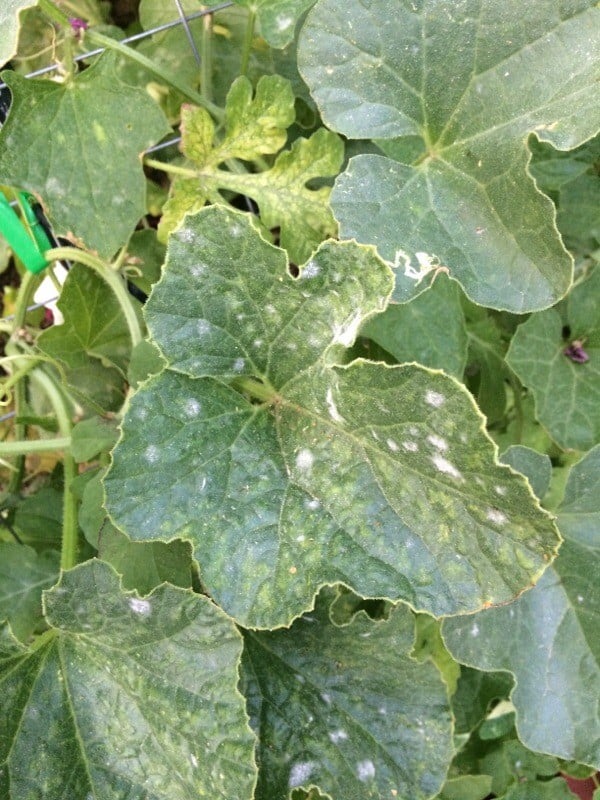I have a few people ask me, “Why is my zucchini plant wilting?”… And here’s what I tell them:
It could be any of these 5 reasons behind this wilting issue that may be the culprit.
Zucchini plants are relatively easy to care for. They grow easily, which is why they are a joy to have in your garden. However, we cannot deny the fact that there are some challenges with growing these crops.
Discover the causes of this wilting concern with zucchini plants and what you can do to prevent or stop it.

Why Is My Zucchini Plant Wilting?
Many summer squashes, as well as zucchini, are great for beginner gardeners. These crops are easy to care for and to grow.
But you may face some concerns, too. For instance, the vines may suddenly stop producing once mid-summer starts. Other issues include deformities in your fruits or the crop dying even before fruit production.
If these are a scenario in your zucchini farm, you may be scrambling for answers behind this phenomenon.
So, why does your zucchini plant wilt, anyway?
There are 5 common reasons, and we’ll discuss them further in the section below.
5 Causes of Wilting in Zucchini Plants
Over time, your crops may encounter problems that they have never undergone before. Here are the 5 common reasons why zucchini plants wilt – and what you can do to reverse the issue.
1. Attacks of the Squash Vine Borers

If there is one serious cause of wilting in zucchini plants, it would be due to these pests. Squash vine borers can seriously impact the growth, health, and development of your zucchini plants.
These are moths with black and red bodies and dark wings. The thing about squash vine borers is that they fly fast. Thus, it is difficult to spot these creatures.
The damages you see are due to the larvae of these insects. The larvae consume the plant’s main stem until it becomes hollow. Then, the plant eventually dies as a result of this damage.
You can easily spot these larvae in your zucchini plants when you notice sawdust-looking, crumbly wastes that settle at the plant’s bottom portion. It means that these critters feed inside the plant.
An effective way to prevent these pests is by protecting your plants from these creatures. Wrap the bottom section of the plant’s stem with aluminum foil. You may also cover the plants with a protective shield until they have grown into full bloom. This way, female moths won’t be able to lay their eggs on your zucchini plants.
Here is a video on squash vine borers and what you can do to stop them from wreaking havoc in your garden.
2. Powdery Mildew
Mildew is another issue behind a wilting zucchini plant. It is a type of fungal disease that attacks your crops and covers them with powdery coating.

While it may initially appear as nothing but an aesthetic concern, it can get worse over time. When your plants are coated with mildew, this can prevent efficient photosynthesis. Eventually, the fungus will cause your plants to get weaker and die.
You can prevent and treat powdery mildew by spacing your crops well. Provide ample room to ensure better air circulation and to dry off any excess moisture.
I will also plant resistant varieties of zucchini and use organic fungicides to control the spread of mildew. It is a tough issue to solve but by addressing the problem at its onset, you should be able to salvage your plants and save them from death.
3. Poor Variety Selection
It is worth noting that not all zucchini plant varieties are similar. There are those that offer a better yield while others are simply more prone to pests and diseases.
Thus, it makes perfect sense to know which zucchini varieties you should plant to eliminate growth and development problems. I recommend planting certain varieties of zucchini such as the Yellow Fin, Green Machine, and the Tigress. These produce for a longer period and perform better than other varieties.
4. Squash Bugs Infestation

Just like squash vine borers, squash bugs give gardeners plenty of headaches and problems. These pests attack your zucchini and cause the crop to wilt and have yellow or brown leaves.
What these bugs do is suck the plant juices out using the sharp mouthpart. They populate the area in clusters, which later on causes damage to your crops.
You can manage this pest infestation in your zucchini plants by inspecting your crops every day. Look for football-shaped, bronze-colored eggs. Although they resist pesticides, you can use horticultural oil for young nymphs to control their growth and spread.
5. Unhealthy Soil
For the most part, your zucchini plant does not need highly nutrient-rich soil. However, it requires organic matter and a reasonable pH level of 6.5. Check the pH level of your soil and try to maintain it in this range. Otherwise, it may result in wilting issues.
A poor pH level causes a reduction in the nitrogen level in the soil. Conversely, it can do the opposite and cause green leaves to sprout faster – at the expense of the crop’s natural ability to yield fruit.
With these things in mind, be sure that you only use organic and balanced fertilizers on your crops to keep them perfectly balanced.
Read more: Problems with Ants On Zucchini Plant? Try These 5 Steps!
Final Thoughts
A zucchini plant that’s wilting is a very frustrating and disappointing concern among farmers. Know the 5 reasons why your crop may be wilting and address these problems immediately with the tips provided. Then, you no longer have to worry about wilting zucchini plants and boost fruit production at the same time. I hope you learned from this post to achieve the finest fruit production worth your time, energy, and money.